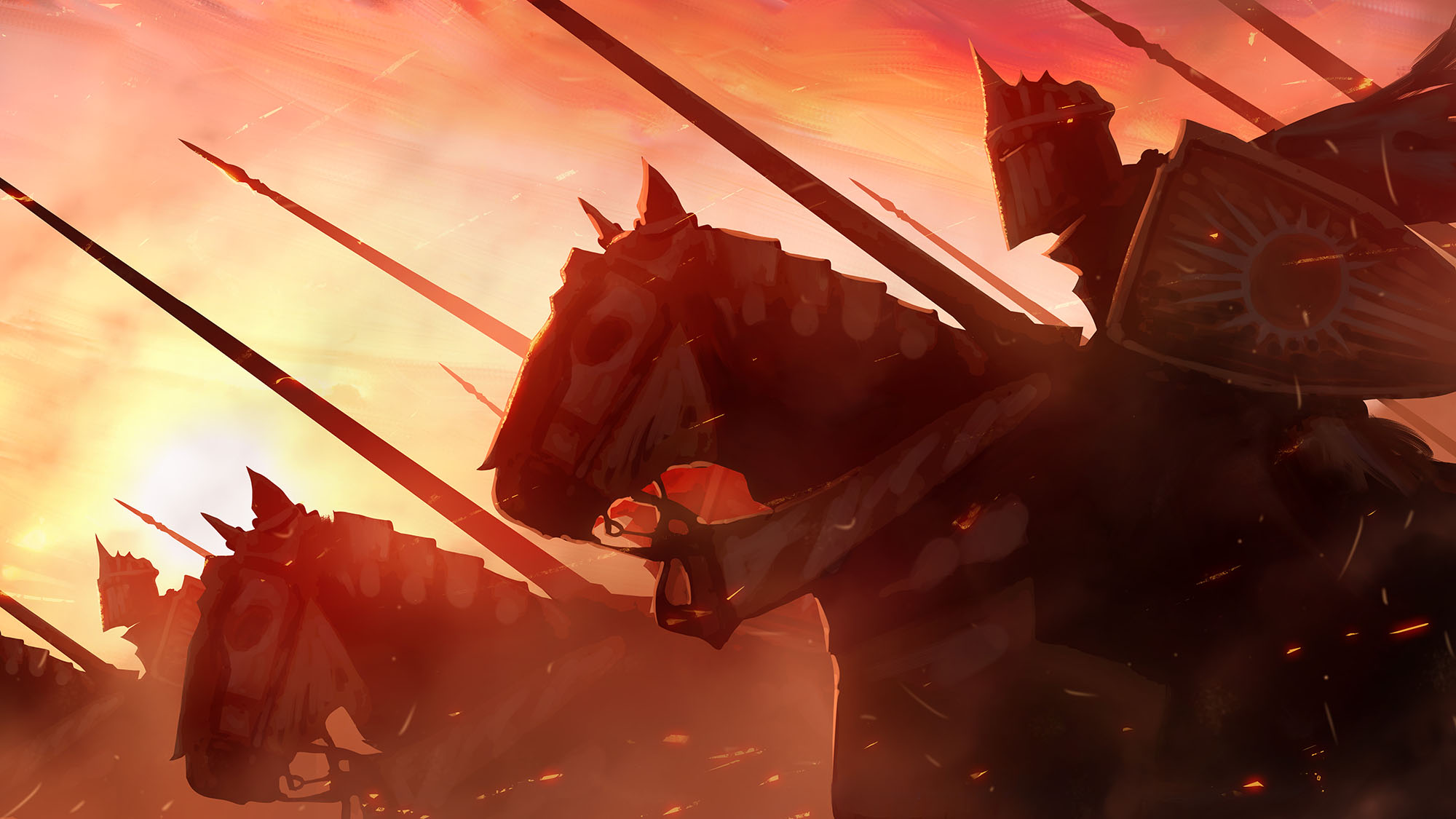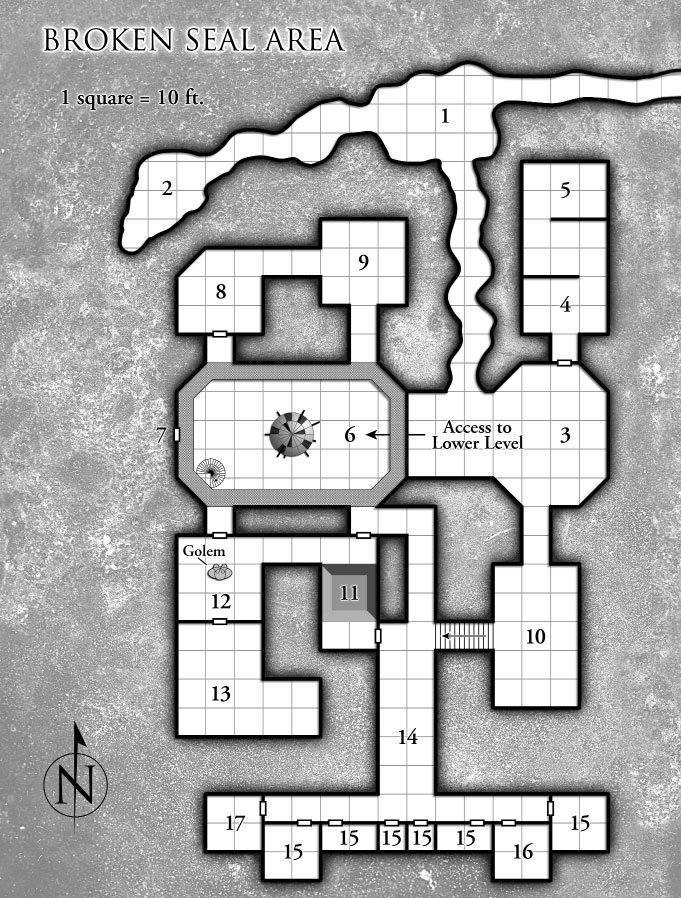DISCUSSING
In the Shadow of the Spire – Session 30A: The Breaking of the Dawn
The red-sashed knight approached with his sword drawn. Tor and Kalerecent stood calmly, careful to give no cause for alarm. As the knight drew nearer they raised their hands and displayed their rings. The knight relaxed slightly, but kept his blade on guard.
“What happened here?” Tor asked.
“Sir Kabel attempted to assassinate the Novarch.”
If I could only give one tip to GMs about pacing in RPGs, it would be to do a cliffhanger every single time the opportunity presents itself. It’s virtually impossible to have too many of them.
We’ve previously discussed cliffhangers at the end of sessions, but here we have a cliffhanger happening in the middle of a session. This is made possible by the fact that the players have split the party: If they were all together, I wouldn’t be able to cut away from Tor immediately after delivering the shocking news that Sir Kabel has attempted to assassinate the Novarch.
This is one of the primary reasons why, in The Art of Pacing, I described splitting the party as pacing on easy mode: There are just so many extra tools you have at your disposal as soon as the PCs are no longer all together in the same scene.
The trick, of course, is getting the PCs to split up in the first place, particularly when “don’t split the party” has become such a maxim in RPG fandom.
The key to this is that the PCs need to have multiple desires which cannot be resolved sequentially (i.e., they either have to both be done right now, or they can’t be done or become much more difficult to do). This tends to rather difficult to pull off with a linear adventure, but often happens all the time and with little or no effort with non-linear scenarios that you’re actively playing.
In this case, of course, the PCs want to both help Kalerecent take Rasnir’s body to the Godskeep AND keep the Banewarrens securely guarded. They can’t be in two places at the same time, and so splitting the party becomes inevitable.
CAMPAIGN COLLISION
What happens over the next session and a half is one of my favorite moments form the entire campaign. And the fact that it kicks off with this scene — of two knights of the Order of the Dawn bearing the body of their dead comrade home at the very moment that the Order is breaking in a bloody conflict — is, if I may say so, about as perfect as one could hope for.
Which is why it’s so interesting that I didn’t plan for any of this happen.
Let’s peel back the curtain here and take a closer look at how this played out.
First, as I’ve previously discussed a bit, the schisming of the Imperial Church was intended to play out as a background event. It was intended to add some depth and flavor to the campaign world in a way that was, at best, tangentially related to what the PCs were doing.
But Dominic unexpectedly presented himself to Rehobath as the Chosen of Vehthyl, which allowed Rehobath to move up his timetable and declare himself Novarch several weeks earlier than I’d expected. And then Tor ended up getting squired in the Order of the Dawn, placing two of the PCs at basically ground zero.
The schism was now very much onstage.
Second, I had keyed the Breaking of the Dawn — in which Sir Kabel gathered loyalists within the Order at the tournament field north of Ptolus to arrange the arrest of the “False Novarch,” only to be betrayed by Sir Gemmell — to my campaign status document as a timed event: It was going to take place at a specific date and time.
Third, Tor — completely oblivious to this — made plans to take Iltumar the would-be hero to the tournament field and do some practice swordplay with him in an effort to give his aspirations a path that didn’t lead straight to the chaos cults. By sheer coincidence, Tor scheduled this training excursion with Iltumar at the exact same time Sir Kabel was going to be at the tournament field.
This prompted me to prep the events of the Breaking of the Dawn in much more detail — basically as a mini-scenario, since it now seemed quite likely that Tor would be directly involved. But then the evolving situation with the Banewarrens caused Tor to cancel his plans with Iltumar!
Regardless, the Breaking of the Dawn was still keyed temporally.
The fourth element here, of course, is Kalerecent. Rather than being keyed to a specific time, Kalerecent was keyed in a status quo: Whenever the PCs arrived at the Banewarrens, he would be waiting with Rasnir’s corpse. (A sufficiently long delay in the PCs reaching the Banewarrens, or if they had come to the Banewarrens and then left again before actually meeting Kalerecent, might have changed that. But that’s purely hypothetical since it didn’t play out that way.)
So in my prep notes, these two things — Kalerecent wanting to take Rasnir’s body back to the Godskeep after being assured that the Banewarrens were secure and the Breaking of the Dawn — were completely unrelated to each other. It was entirely coincidental that things played out this way. And, in fact, it’s quite easy to imagine a scenario in which:
- none of the PCs chose to accompany Kalerecent;
- Tor stayed in the Banewarrens (“as a fellow member of the Order, I’ll take up your oath, Kalerecent, until you can return”) while some other group of PCs accompanied Kalerecent;
- the PCs screwed up and the Pactlords killed Kalerecent when they returned to the Banewarrens;
or any number of other possibilities.
That’s really the beauty of prepping scenarios that can be actively played: You never know how all of your disparate toys will come together to create something of astonishing and unexpected beauty.
Campaign Journal: Session 30B – Running the Campaign: Spray Your Bullets
In the Shadow of the Spire: Index


















